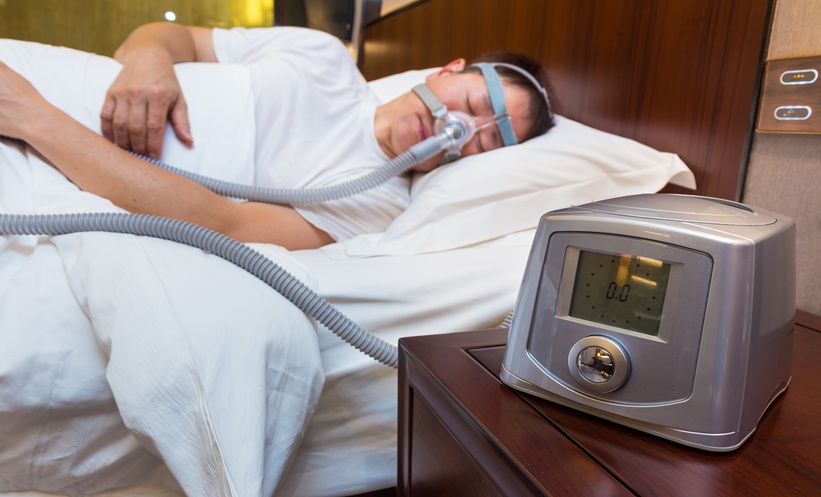Author: Robin Stannard, EMJ, London, UK
Citation: EMJ Respir. 2023;11[1]:22-24. DOI/10.33590/emjrespir/10308211. https://doi.org/10.33590/emjrespir/10308211.
![]()
MEDICAL MANAGEMENT OF PNEUMOTHORAX
Steven Walker, University of Bristol, UK, delivered the first session, where he introduced and detailed the inaugural European guidelines on the management of spontaneous pneumothorax. The guidelines include recommendations for the optimal management of both acute pneumothorax and PAL, focusing on optimal practice for recurrence prevention. The novel guidelines, which will be published later this year, were created by 25 world-leading experts who devised 12 clinical questions to be answered. Literature reviews, meta-analyses, and research studies were analysed, and then graded against a process of evidence decision frameworks, providing 12 recommendations in response to the 12 clinical questions.
Acute Presentation of Pneumothorax
Walker presented the guidelines on acute pneumothorax by introducing the audience to a patient case study. The patient was a 23-year-old, who had been short of breath for 2 days, with no signs of cardiac compromise, comfortably mobile, and with no medical history of pneumothorax. Chest X-ray showed a large right-side pneumothorax. Walker provided the audience with four options for patient management analysed by population of interest, intervention, comparator (standard of care [SoC]), and outcomes (clinical and patient-related). The interventions were compared against the current SoC for acute pneumothorax, which is a chest drain.
The first intervention was conservative management, an observational approach that allows the lung to inflate by itself. Analysis of literature reviews found that, compared with SoC, this approach was associated with a shorter length of hospital stay (4.5 days fewer), a lower rate of recurrence (81 fewer per 1,000), and fewer further procedures (152 fewer per 1,000). Based on this evidence, the new guidelines recommend conservative management for PSP in select cases, regardless of pneumothorax size, where there is minimal breathlessness, and clinical and radiological stability.
Needle aspiration was the most robustly studied intervention, with six randomised controlled trials. Compared with SoC, needle aspiration resulted in a reduced length of hospital stay (2.2 days fewer), and decreased symptom scores (1.21 lower). The panel recommended needle aspiration over chest drain for the initial treatment of PSP.
Ambulatory management involved the use of an inserted Heimlich device, which allows the patient to mobilise, and potentially go home while the air leak is being managed. Analysis found this had a shorter hospital stay (3 days fewer), reduced recurrence (39 fewer per 1,000), and 148 fewer further procedures per 1,000 patients. The guidelines advised ambulatory management for PSP, adding the caveat that this should only be used in centres where there is appropriate expertise, and procedures to manage patients as outpatients.
Early surgery had been previously reserved as a recurrence prevention technique in patients who have experienced more than one pneumothorax; however, the experts examined the role of the procedures in first-line management. They found a lower rate of recurrence (271 fewer per 1,000), and a decrease in complications (95 fewer per 1,000). The panel recommended considering early surgery in patients with PSP who prioritise recurrence prevention. Walker praised this recommendation for the strong element of patient choice that is included here. This newly developed decision aid weighs up the different options for acute PSP management, allowing physicians and patients to collaboratively select the optimal approach.
Optimal Management of Persistent Air Leak
Walker also presented the novel recommendations for PAL management through the lens of a patient case study. The patient was a 73-year-old with known chronic obstructive pulmonary disease, who had a chest drain inserted 3 days prior that was still bubbling. Surgeons did not feel the patient was a good candidate for surgical management due to numerous comorbidities. The patient had a left-sided secondary spontaneous pneumothorax and PAL. Walker again compared three different management options using the novel evidence, and recommendations of the guidelines.
The first option considered was an autologous blood patch, a procedure that instils the patient’s own blood via a chest drain to reduce an air leak. Analysis has shown that this intervention reduces length of hospital stay (2.37 fewer days) and increases leak resolution (222 more per 1,000). The guidelines concluded that autologous blood patch can be considered in PAL when patients are not fit for surgery.
Walker secondly analysed bronchial valves as an intervention. These are unidirectional valves inserted through bronchoscopy into the bronchial tree. Analysis has demonstrated a shorter air leak duration (3.18 days fewer) and an increased number of resolutions (240 more per 1,000). However, the panel made no formal recommendations for or against bronchial valves, due to the lack of conclusive evidence.
The final intervention considered was thoracic suction, which is the application of suction to a chest drain to re-expand a lung, reducing the air leak. The evidence analysed found no significant difference in outcomes, resulting in the panels making no recommendations for or against the use of this intervention.
Concluding his presentation, Walker highlighted the multiple treatment avenues available for patients with PSP, while acknowledging the lack of evidence currently available for secondary patients with PAL. He highlighted the importance of additional research and funding to address these questions.
CO-ADJUVANT TREATMENTS FOR SEVERE COMMUNITY-ACQUIRED PNEUMONIA
The second guidelines presentation, given by Antoni Torres Martí, University of Barcelona, Spain, delved into new findings surrounding the use of anti-inflammatory medicines, specifically corticosteroids in treating SCAP. Patients with SCAP have a very high mortality rate and, therefore, require more effective and targeted treatments. A previous study examining systemic inflammatory responses in 38 patients with SCAP measured inflammatory markers every 2 days. The study found that patients with persistent inflammatory responses died more frequently. Corticosteroids work to reduce inflammation through the inhibition of nuclear factor κ-light-chain-enhancer of activated B cells, a transcription factor involved in multiple inflammatory processes. Martí highlighted lessons learnt from the COVID-19 pandemic that persistent inflammatory responses are associated with higher mortality, explaining the rationale for the use of corticosteroids that downregulate local and systemic immunity in CAP and SCAP.
Previous guidelines published in 2019 did not recommend corticosteroids for the treatment of SCAP; however, they have now become part of standard care. A 2015 study on the effect of corticosteroids on treatment failure among patients hospitalised with SCAP found that corticosteroids demonstrated a reduction in late treatment failure described as radiographic progression, severe respiratory failure, or death.
Martí highlighted an additional study examining the efficacy and safety of adjunctive corticosteroid therapy in patients with SCAP, which found that hydrocortisone was inferior to methylprednisolone for patient outcomes. A novel study found patients with SCAP on prolonged low-dose methylprednisolone treatment did not demonstrate significantly reduced 60-day mortality; however, patients did overall require 3 fewer days of mechanical ventilation.
In the 2023 guidelines, outlined by Martí in his presentation, the panel recommended the use of corticosteroids in patients with SCAP when shock is present; however, Martí emphasised that this is a conditional recommendation, with a low quality of evidence. The guidelines further recommend the use of methylprednisolone, based on the balance of the evidenced literature. Methylprednisolone is, therefore, recommended for use in septic shock and shock not related to sepsis to decrease mortality in patients with SCAP. Martí highlighted that guidelines are not always correct, and that they must be constantly updated based on emerging evidence. He also underlined to the audience the need for further randomised controlled trials focusing on steroid dosage and duration, viral versus bacterial pneumonia, and implications for immunosuppressed populations, as well as better endo/genotyping exploring gluco-corticosteroid resistance.
CONCLUSIONS
The analysis of the novel guidelines highlighted areas with large amounts of evidence, such as the management of PSP, where multiple treatment options are recommended for different situations, enabling the patients’ preference and priorities to be considered. However, the guidelines also underline areas where evidence, research, and, therefore, treatment options are limited, including secondary pneumothorax with PAL, and understanding optimal usage of corticosteroids to improve the outcomes of patients with SCAP, which is currently associated with very poor prognosis, and high mortality rates.






